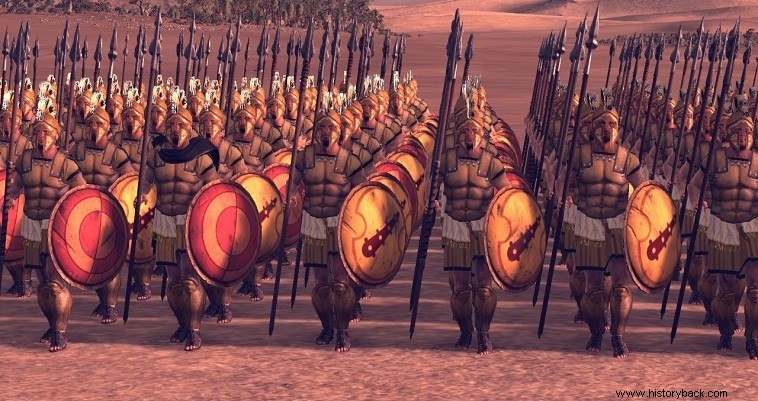
The battle of Tegyra, in 375 BC. despite the small size of the forces involved in it, it is one of the most important in ancient Greek history. In this battle, Pelopidas with the Theban Sacred Company and some horsemen defeated a stronger Spartan force, dispelling the myth of invincible Sparta.
Tegyra was a small town in Boeotia about 5 km north of Orchomenos. After the rebellion of the Thebans against the Spartans, Epaminondas and Pelopidas regained control of their city and revived its army, initially creating the elite Holy Company , which consisted of 300 excellent hoplites.
Despite the loss of Thebes, the Spartans maintained control of Orchomenus having garrisoned the city. However, the needs of the war forced the garrison of Orchomenos to move towards Locris. Pelopidas, learning the news, moved with a small force towards Orchomenos with the aim of conquering the city. Not expecting resistance, Pelopidas had a few soldiers with him.
Arriving in the city, however, he was informed that the Spartans had left the soldiers behind. So Pelopidas decided to retreat to Tegyra. But he did not know that the Spartan force that had gone to Locris was returning to Orchomenos right through Tegyra Street.
Catalytic conflict by meeting
Neither the Thebans nor the Spartans were aware of the presence of their opponents. Some were marching to the North, others to the South. Pelopidas became aware of the presence of the Spartans when they entered the strait between the marshes of Lake Kopaida, the sanctuary of Apollo and Mount Delius.
Pelopidas according to Plutarch Pelopidas had 500 men, 300 Hierolochites and 200 horsemen. Diodorus Sikeliotis speaks of "500 elites". As for the Spartans, Diodorus states that they were twice as many as the Thebans, while Plutarch states that two Spartan mores (a battalion-level unit with a usual strength of 500-600 men) took part in the battle.
Essentially, the two ancient historians confirm that the Spartans were at least twice as many as their opponents. Other sources, however, state that the Spartans numbered 1,800 men.
The Thebans, until then, like the rest of the Greeks, looked at the Spartans with awe. Thus, according to Plutarch, when the Thebans saw the Spartans, some of them approached Pelopidas and said to him:"We have fallen into the hands of the enemy"...
This was enough for him to answer:"And why shouldn't they fall into yours?". Immediately afterwards he ordered his horsemen to prepare for an advance and ordered the Hierolochites in a dense phalanx, on the left flank. The Spartan generals Gorgoleon and Theopombus, confident of the worth of their men, formed their standard phalanx and attacked.
The dense formation of the Theban Hierolochites, however, helped them to break the Spartan line. Immediately after they "opened" their formation attacking the Spartans at the edges of the rift. Then many Spartans fled.
Pelopidas did not pursue them with his infantry as several more opponents continued to fight. The Hierolochites turned against them and cut them down. The rest of the Spartan force was pursued, apparently by the Theban cavalry, to Orchomenos.
Oblique phalanx
According to modern historians the battle was effectively won by the Slant Phalanx tactics implemented by Pelopidas at the tactical level. The cavalry could not break up the Spartan phalanx, but could safely inflict casualties with their javelins without danger.
The losses obviously weakened the Spartans, but the bottom line is the cavalry engaged the strong Spartan right (traditionally the best warriors were on the right flank) giving the Sacred Horde time to break the Spartan left.
The ancient sources do not mention the losses on either side. However, they report that both Spartan generals fell in the battle, which suggests that the Spartan losses would have been quite significant. But beyond the losses, what was mortally wounded in Tegira was the Spartan prestige. It was the first defeat of the Spartans in a conflict where they were outnumbered.
